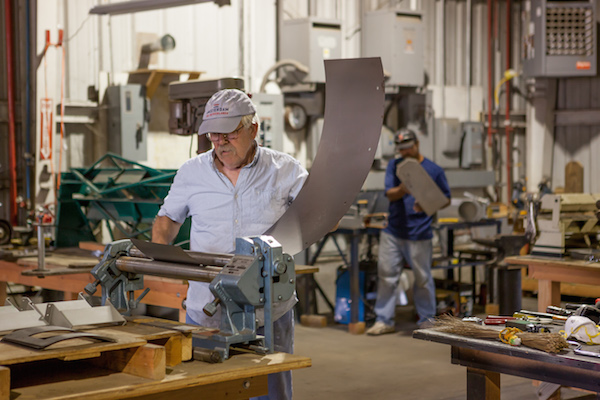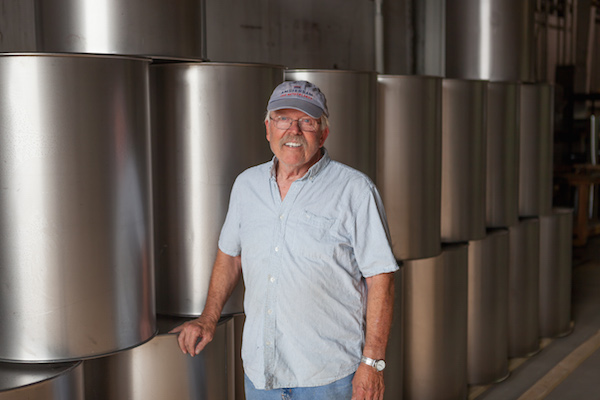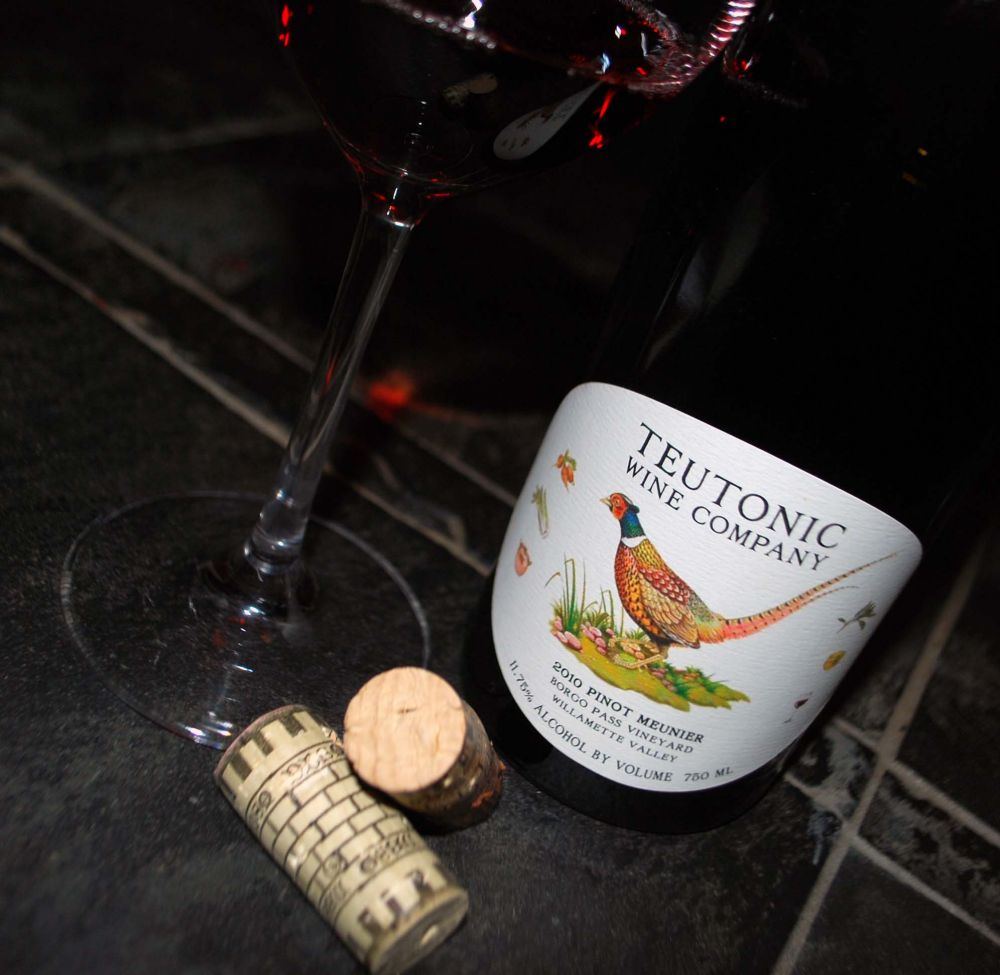Fred Colgan moved to Oregon a decade ago to retire. Instead, the former carpenter and contractor wound up using his skills to help develop a highly efficient, institutional rocket stove, co-founding Institutional Stove Solutions, or InStove, in 2012. The Cottage Grove nonprofit humanitarian organization has made and placed 1,100 stoves in twenty-seven countries, sixteen of them in sub-Saharan Africa.

photo by Erik Bishoff
You and retired engineer Damon Ogle designed InStove. How does it work?
The stove looks like a three-foot tall, green, fifty-five-gallon drum with a pot in the middle and a chimney pipe out the back. It comes in two sizes, fifteen gallons ($850) and twenty-five gallons ($995) and cooks 110 and 220 meals at a time, respectively.
A refractive combustion chamber within the drum gets hot enough to literally “burn up the smoke,” and the design maximizes surface area for heat transfer to the pot. Our stoves are about 50 percent thermally efficient and use small sticks of sustainably-harvested wood. Most stoves are less than 25 percent thermally efficient. An open fire is less than 10 percent efficient.
Can you tell us about the dangers of open-fire cooking in developing countries and how InStove eliminates these hazards?
About one in three people on earth cook over open fires. Public health dangers include burns, blindness, and lung and heart disease. Our stoves use about one tenth the fuel of open fires. This translates to reduced demand for wood and reduced emissions, which protects the health of the cook, the climate and the surrounding forest ecosystems. The stove also remains cool to touch (which protects from burns) and routes any minimal smoke away from the cooking space.
Where is InStove being used?
About 99 percent of our stoves are in use in refugee camps and school feeding programs in sub-Saharan Africa. The remainder of InStoves are in schools, orphanages, hospitals and clinics throughout the developing and developed world. According to the Global Alliance for Clean Cookstoves’ online catalog, we have the cleanest, safest, most efficient stove in the world. We’ve been endorsed this year by both Sustainia (a Danish think tank) and the World Health Organization.
In 2014, we launched an allied benefit corporation and began selling to U.S. and Canadian clients, who have used InStoves for everything from space heating and water boiling to daily cooking at food carts and resorts. El Sancho restaurant in Bend discovered that by switching from propane to our wood-burning stove, the stove paid for itself in about three months in fuel and labor savings.
You’ve designed a multi-use stove. Tell us about its adaptations.
Early on, we realized that the stove could be harnessed to power other systems. One of these is as an autoclave used to sterilize medical equipment and waste, a system desperately needed in rural or disaster relief settings. The stove can also be used to pasteurize enough water to meet the needs of an entire community, producing about 200 gallons per hour with a pencil’s weight of wood per liter produced. It can also be used with a wok or pressure cooker.
On our R&D calendar are innovations that will allow the stove to be used as a griddle (primarily for cooking tortillas in Latin America), a space heater, an electricity generator, a bread oven, a refrigerator, a water pump and to operate using wood pellets.
What’s next for InStove?
We’re focusing on providing education to students, professionals and the community through educational workshops. This means hands-on lessons in rocket stove design and open-fire cooking, as well as education in environmental and community health impacts. We also take on interns from local colleges and universities who learn skills from us, while helping us to advance our mission.










Thank god for people like these who think outside the box to help save us all from wasteful methods of energy use/pollution